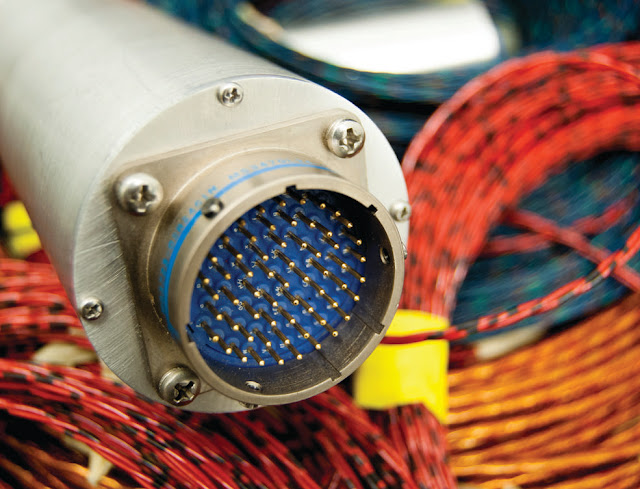NASA Debuts Automated System to Streamline Technology Patent Licensing
Engineers at NASA's Kennedy Space Center have invented an in-situ wire damage detection and rerouting system that can detect wire faults and determine fault type and location on electrical wiring. When a damaged or defective wire is identified, the system can autonomously transfer power and data connectivity to another wire. Used in conjunction with NASA’s conductive detection layers, the system can detect and limit damage not only to the core conductor but also to the insulation layer before the conductor is compromised.
NASA has developed a new system to streamline the way the agency licenses its technology patents, making the transfer of NASA-patented innovations to industry easier than ever before.
The Automated Technology Licensing Application System (ATLAS) provides prospective licensees a streamlined, centralized online tool for applying for any one of the more than 1,400 innovations NASA currently has available for licensing. Through the licensing of NASA patents, many technologies originating in America’s space program make their way into the commercial marketplace every year.
“An investment in NASA technology is an investment in the U.S. economy,” said Steve Jurczyk, associate administrator for the agency’s Space Technology Mission Directorate (STMD). “Through technology transfer, NASA helps create jobs, maintain U.S. economic competitiveness, and bring new products and services to market.”
With the introduction of the Automated Technology Licensing Application System (ATLAS), transferring NASA-patented innovations to industry is easier than ever before.
In order to meet the rigorous demands of mission requirements, NASA always has operated at the forefront of technology development. Some of the tools the agency has used, or is using, to explore space or help reveal the mysteries of the universe are available to applicants to commercialize, solve a unique design challenge, or even start a new company.
NASA’s patent portfolio is searchable and offers technologies in fields that range from aeronautics and propulsion to electronics, materials, sensors, instrumentation, and a broad array of other disciplines. ATLAS guides the applicant through every step of the licensing application process, gathers basic information about the company, business goals, and potential target markets. The system will email notifications to the applicant with updates about the application status and any required actions.
“Streamlining and simplifying our licensing process saves businesses time and money as they pursue commercialization of NASA’s technologies,” said Dan Lockney, Technology Transfer program executive for STMD. “Licensing patents isn’t new, but with the NASA license application tool, and our comprehensive portfolio of available technologies, we are making NASA’s work available to industry, which is a significant achievement.”
Patent licensing is an important component of NASA’s Technology Transfer program, through which the agency ensures that the technologies it develops are made broadly available to U.S. businesses and the public. Technology Transfer efforts maximize the nation’s investment in NASA, spur the economy, and transform NASA-developed technologies into products that enhance and improve our everyday lives.
References: Nasa.gov
Tag: Technology



















No comments: